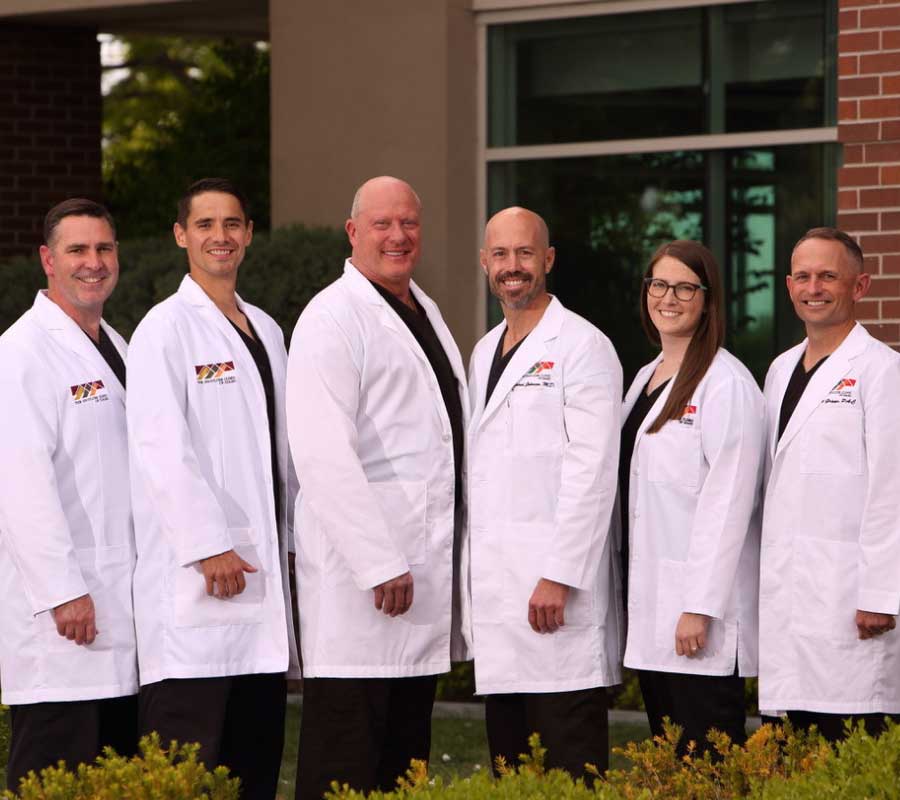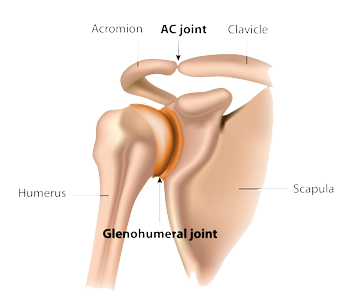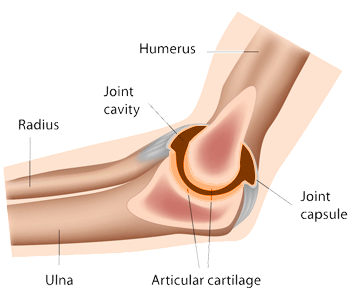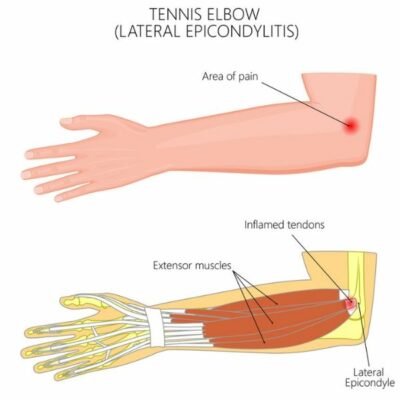Tennis Elbow Specialists

Are you an athlete who participates in tennis, racquet sports or activities requiring repetitive motions? If so, you are at an elevated risk of developing tennis elbow. Tennis elbow is characterized by small tears in the tendon from continuous overuse of the arm and forearm muscles, leading to pain and tenderness on the outside of the elbow. The tennis elbow specialists at Shoulder Clinic of Idaho provide diagnosis and both surgical and nonsurgical treatment options for patients in Boise who have symptoms of tennis elbow. Contact the Shoulder Clinic of Idaho team today!
What is Tennis Elbow?
Tennis elbow, also called lateral epicondylitis, is a painful condition of the elbow caused by overuse. The forearm muscles and tendons become damaged by repetitive motion which causes small tears in the tendons surrounding the elbow area. These tears cause inflammation which can lead to pain and tenderness on the outside of the elbow. The orthopedic specialists at The Shoulder Clinic of Idaho have been treating patients with tennis elbow in Boise, Meridian, Nampa and the surrounding communities of the Treasure Valley successfully and are able to help them return to the sport or activity they enjoy.
Do only tennis players get tennis elbow?
Despite its name, athletes aren’t the only people who may experience tennis elbow or associated painful symptoms in the elbow and forearm. Tennis elbow is a type of tendinitis that causes pain in the elbow and forearm. It can be common in the working population as a result of a work-induced injury. The tendons are bands of strong tissue that connect the muscles to the bone. Repetitive, gripping activities can cause this injury. Tennis elbow is often seen in plumbers, carpenters, painters, butchers and gardeners. Lateral epicondylitis may also occur from a fall or automobile accident resulting in an acute injury or tendon tear which does not completely heal. This unhealed tendon then becomes susceptible to repetitive trauma resulting in a presentation similar to those with epicondylitis. A condition that can happen at any age, tennis elbow is most common in adults around 40 years of age.
What causes epicondylitis?
Tennis elbow usually develops over time. Recent studies show that epicondylitis is often caused by damage to a specific forearm muscle called the extensor carpi radialis brevis (ECRB) muscle. This muscle helps stabilize the wrist when the elbow is straight. When the ECRB is weakened due to overuse, microscopic tears in the tendon that attach the muscle to the bone cause pain at the attachment site: The lateral epicondyle. As the arm bends and straightens, and as small tears develop in the ECRB tendon that do not fully heal, this leads to a chronic recurrent condition resulting in pain adjacent and just distal to the lateral epicondyle. Tennis elbow may result from:
- Tennis
- Racquet ball
- Fencing
- Weightlifting
- Golf
- Raking
- Carpentry
- Paddling
- Repetitive forceful wrist extension activities
What are the symptoms of tennis elbow?
The symptoms of tennis elbow include pain and tenderness near the bony protuberance on the on the outside of your elbow – the lateral epicondyle. Symptoms associated with tennis elbow are:
- Pain and tenderness on the outside of the elbow
- Pain that radiates into the upper or lower arm
- A weak grip
- Difficulty making a fist or grasping an object
- Persistent, dull ache on the outside of the elbow
Pain from tennis elbow may make it difficult to hold a coffee cup, turn a knob, or lift something with the palm facing downward.
How is tennis elbow diagnosed?
The orthopedic specialists at The Shoulder Clinic of Idaho will consider many factors in making a diagnosis of lateral epicondylitis. These factors include how the symptoms developed, whether it be work related, due to sports activities, or secondary to an accident. It’s important to give the physicians information on prior injuries or if there is a history of arthritis or nerve disease about the elbow as this may impact treatment.
During the physical examination, the orthopedic specialist will use a variety of tests to pinpoint the diagnosis of tennis elbow. Some tests include asking the patient to straighten the wrist and fingers against resistance with the arm fully straight to see if this causes pain. If multiple tests are positive, and the location of the pain and mechanism of injury is characteristic, it tells your doctor that those muscles may not be healthy. Most commonly, tennis elbow is diagnosed by pain when palpating directly over the area of the lateral epicondyle or just distal to this bony protuberance.
What treatment options are available for tennis elbow?
Most patients seen for tennis elbow by the orthopedic specialists at The Shoulder Clinic of Idaho can be treated successfully with non-surgical methods. Depending on the severity, one or more of the following treatment options may be used:
- R I C E: Rest, Ice, Compression and Elevation – It is important to rest the injured arm and elbow. Ice, compression, and elevation can help alleviate pain symptoms particularly if the elbow pain is severe.
- NSAIDs: Non-steroidal anti-inflammatory medication may be prescribed to help with pain and swelling.
- Physical therapy: There are specific exercises that can help alleviate the symptoms of tennis elbow as well as strengthening the muscle. Physical therapy may include ultrasound, ice, massage, or muscle stimulation techniques to improve healing.
- Brace: A specialized brace, centered over the forearm muscle can help reduce symptoms by resting the muscles and tendons. Wrist braces may also be used as an alternative to rest the muscles which attach to the lateral epicondyle.
- Steroid injections: Corticosteroid injections for tennis elbow may be affective as an anti-inflammatory treatment to help injured muscles heal; however they must be used judiciously as they can also cause further problems.
- PRP: platelet rich plasma is an excellent alternative for non-surgical treatment of lateral epicondylitis and has the same efficacy as corticosteroid injections (in some studies better efficacy) without the associated risks.
Surgical treatment:
If non-surgical treatments fail to alleviate the symptoms associated with tennis elbow, or if left untreated, lateral epicondylitis may require surgical intervention. The surgery is done to repair torn tendons in the elbow and can be performed arthroscopically or open. Arthroscopic surgery is a minimally invasive treatment that involves small incisions and specialized equipment used to operate inside the elbow joint. Open treatment is done minimally invasively through a small incision centered over the area of the abnormal muscle attachment.
If you have symptoms tennis elbow, or if you would like more information about the treatment options or lateral epicondylitis and elbow pain, please contact the orthopedic specialists at The Shoulder Clinic of Idaho serving patients in Boise, Meridian, Nampa and the surrounding communities of the Treasure Valley.



